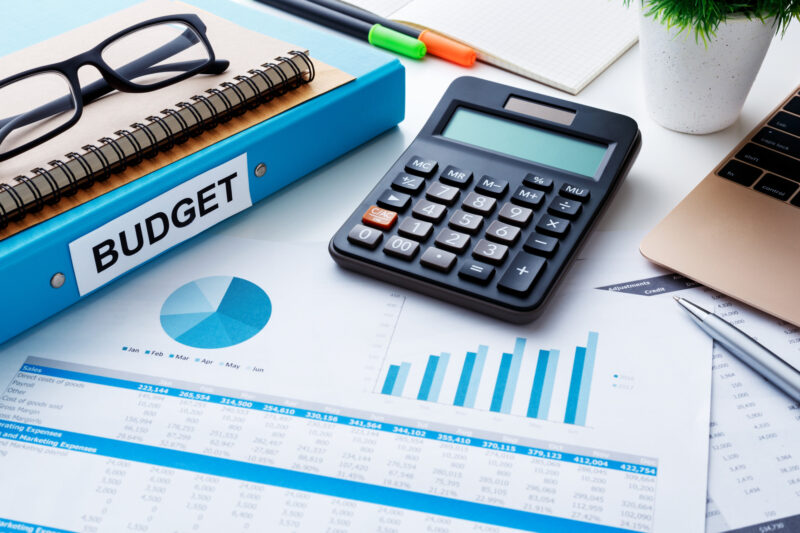Business Basics: How to Be Your Own Accountant
About 69% of small businesses have financial challenges. Their biggest challenge is figuring out how to pay operational expenses.
It’s hard to manage business finances and try to pay bills every week. You don’t have to fly by the seat of your pants to make financial decisions.
You should learn how to be your own accountant. It’s a major step towards controlling your financials, instead of the money controlling you.
Read on to learn how to be your own business accountant for tips to manage your finances.
1. Keep Business and Personal Expenses Separate
As a business owner, it’s easy to mix up personal and business expenses. DIY accounting starts by diligently maintaining two accounts.
You have a responsibility to track your business expenses and income. It’s very difficult to do if you have personal expenses coming out of your business account, or deposit business income into your personal account.
Even if you’re a sole proprietor, keep separate accounts. Put all of your business income and expenses into one account. Set aside a certain percentage for taxes each time you receive income. Transfer money into your personal account to cover your personal expenses.
2. Get Bookkeeping Software
Bookkeeping software makes business accounting easy. Most of the time, you connect your bank accounts to the software and it automatically imports transactions for you.
The software also generates reports and most solutions handle invoicing and payroll. Quickbooks is the most common software solution. There are many Quickbooks Training programs that help you set up the software correctly.
Plus, tax preparers are already familiar with the software. If you decide to have someone look over your taxes, you can just give them access to your Quickbooks account.
3. Choose Your Accounting Method
There are two types of accounting methods: accrual and cash. The vast majority of small businesses operate using the cash method.
The cash accounting method records payments and expenses in your books as they happen. The accrual method records income and expenses as they happen, even if payment isn’t received.
For instance, you send a purchase order to a client, you’ll record that transaction using the accrual method once the PO is sent. Using the cash method, the transaction isn’t recorded until you get the payment.
4. Create a Chart of Accounts
A chart of accounts is a way to categorize your transactions. Software usually has a basic chart of accounts, but you’ll have to refine it for your business.
You’ll need to list your assets, liabilities, operations expenses, revenue sources, and the cost of goods sold. Within these major categories, you’ll create sub-categories.
For example, under the cost of goods sold, you’ll have inventory expenses and contractors. You’d list loans and credit card debt under liabilities.
5. Keep Records of Everything
Your accounting software package keeps good records. You need to make sure that you match your records with your accounting ledger.
Don’t throw away receipts or financial documents. Always save them. You should have a system to file papers and documents both online and offline. This ensures that your business is covered if you’re ever audited.
6. Set Up an Accounting Task List
Business accounting is a full-time job. It’s not something you do at tax time. It’s something you have to commit to on a regular basis.
You should have a schedule set to do accounting on a daily or weekly basis. There are some tasks you can do monthly and others can be done quarterly and annually.
Each week, you should send invoices, update and categorize transactions, and file your receipts. Each month, you’ll pay bills, reconcile accounts, review your receivables, and financial reports.
Every quarter requires that you need to pay estimated taxes. You might have to write off bad debt as well.
These tasks are a general guideline. You may have other tasks, such as running payroll and paying payroll taxes that need to get added to your weekly and monthly task list.
7. Understand Your Tax Obligations
Most business owners find taxes confusing and stressful. They’re not if you know what your tax obligations are and you prepare for them.
Tax obligations depending on the business type and location of the business. A sole proprietor has to pay self-employment taxes and income taxes.
You could be self-employed, but have a single-member LLC that’s taxed as an S-Corp. The business would have taxes, and you’d pay your own income taxes.
You’ll also need to find out what your state and local tax requirements are. If you sell products and services locally, you may have to pay sales taxes.
8. Know the Basic Financial Reports
The ability to know where your business is financially at any time is a necessity. You don’t want to look at your bank accounts and make financial decisions based on what’s in there.
There are three financial reports to be familiar with. The balance sheet looks at your assets, equity, and liabilities. The income statement, also called the profit and loss statement, examines the revenue and expenses for a given time period.
The cash flow statement is similar to the income statement. The cash flow statement shows you how much cash you have on hand at any time.
Knowing how to read and interpret these financial reports lets you make sound financial decisions.
It’s Possible to Be Your Own Accountant
Can you be your own accountant? Yes, you can. You should be your own accountant to give you more control over the financials of your business.
The tips in this article show you what you have to do to be your own accountant. You’ll take ownership of your business and make better business decisions because you understand the financial aspects.
Be sure to check out the blog for more business and financial tips!


